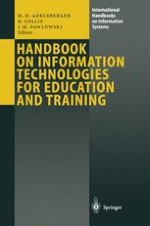Information Technologies for Education and Training have gained increasing atten tion and significance in the past decade. Accordingly, the availability of an enormous amount of information sources through the Internet, the technological progress in the ICT sector, and an increasing flexibility in organizations and enterprises have accelerated the information and knowledge growth in our society. Knowledge and Lifelong Learning have become critical success factors for the long-term positioning on the global market. Recent mergers of globally distributed enterprises show that knowledge has to be available and transferable within a short time frame. Global, flexible, and service-oriented organizations need highly qualified employees. These trends also show the rapidly growing significance of new aspects of ba sie and further education. Traditional education, ending with a graduation, will be complemented by a lifelong leaming process. Every individual is required to contin uously leam new and changing knowledge. Consequently, the support of leaming processes through innovative technologies becomes an elementary component of every educationallevel. The Handbook is a comprehensive guide for researchers and practitioners work ing with Educational Technologies. lts overall goal is to enable the reader to gain a deep understanding of past, current, and future research and applications in the field of Educational Technologies. It will provide a reference source for both practitioners and researchers in the enterprise and educational sector. From a research perspective, the reader will gain an in-depth understanding of complex theories, strategies, concepts, and methods of Educational Technologies.
